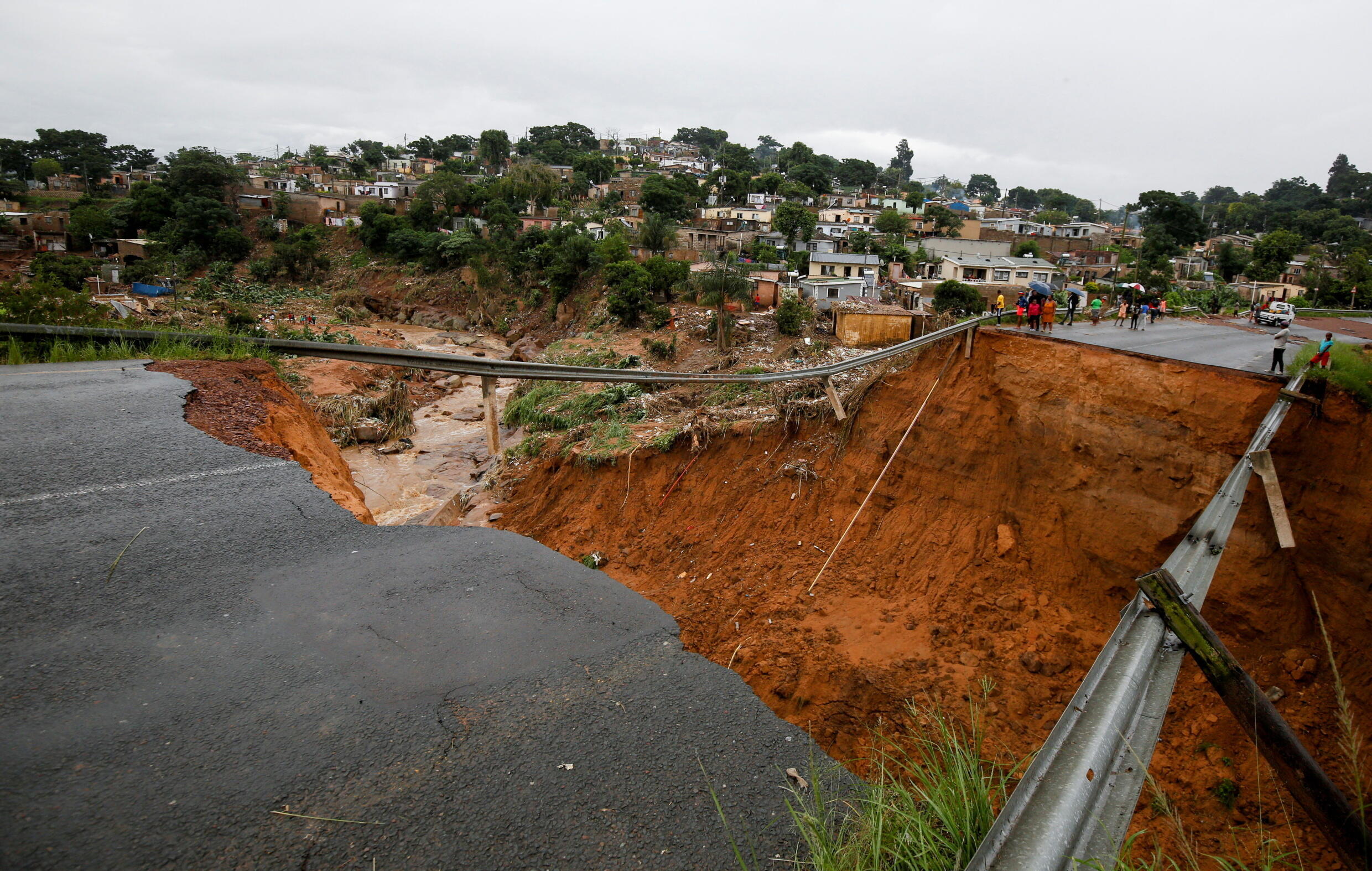South Africans seek shelter after hundreds killed in catastrophic floods
Victims of South Africa's deadliest storm on record scrambled to get help on Thursday as the death toll from floods and landslides that struck the country's south-east surged beyond 300.
Issued on:

At least 306 people have been killed in the city of Durban and KwaZulu-Natal province after the heaviest rainfall in six decades wreaked havoc.
The government has declared a state of disaster in the region and pledged relief to those affected.
President Cyril Ramaphosa, in a visit to the area on Wednesday, described the floods as a "calamity ... a catastrophe of enormous proportions".
He also described the disaster as a "force of nature", though some say the high death toll is also due to poor drainage and badly built houses in low-lying areas.
People have been trapped under buildings in the mudslides, and more floods are expected from Friday.
Thousands have been made homeless, roads and bridges swept away and at least 248 schools have been damaged.
The government of KwaZulu-Natal has put out a public call for aid, urging people to donate non-perishable food, bottled water, clothes and blankets.
The authorities are assessing "all affected families" for their needs, a statement said.
🇿🇦 L'Afrique du Sud frappée par les pires inondations de son histoire: les images aériennes au-dessus de #Durban pic.twitter.com/qQ56RYpDHN
— Joe 🇺🇦 (@LTSmash420) April 14, 2022
Appeal for shelter
However many survivors said they had been left to fend for themselves.
In Amaoti, a township north of Durban, residents balanced precariously on the edge of a broken road trying to fetch clean water from a broken pipe underneath.
Volunteers said they were desperate to find food, clothes and other essentials.
In a pitch dark hall in Durban's Glebelands hostel district, volunteers used the torches from their cellphones to register scores of displaced people overnight.
"We are just helping the people because we care," said Mabheki Sokhela, 51, who helped organise temporary shelter at a community hall.
"These are our brothers and sisters."

Brutal storm
Weather experts say high levels of rain were dumped over the region over several days in what is South Africa's biggest storm on record.
Some areas received more than 450 millimetres in 48 hours, the equivalent of nearly half of Durban's annual rainfall of 1,009 millimetres, the national weather service said.
The storm caught South African authorities unprepared.
The country has been largely shielded from tropical storms that form over the Indian Ocean and typically batter Mozambique when they make landfall.

The latest rains were caused by a weather system called a "cut-off low" that brought wet and cold weather to much of the country.
The South African Weather Service has issued an Easter weekend warning of thunderstorms and localised flooding in KwaZulu-Natal and neighbouring Free State and Eastern Cape provinces.
The country is still struggling to recover from the two-year-old Covid pandemic and deadly riots last year that killed more than 350 people.
(with AFP)
Daily newsletterReceive essential international news every morning
Subscribe